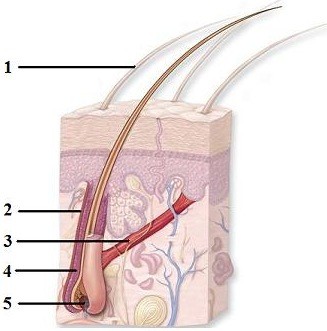Identify the effectors in this homeostatic reflex: Eating a salt-rich meal increases blood volume and pressure, stretching blood vessel walls. Nerve signals sent to the brainstem stimulate changes in hormonal and neural signaling. The heart rate is slowed, blood vessel walls are relaxed, and the kidneys increase urinary salt. The blood pressure returns toward normal.
A. Blood vessels, hormones, and nerves
B. Heart, blood vessels, and kidneys
C. Hormones and nerves
D. Brainstem and blood vessels
E. Brainstem, blood vessels, and kidneys
Answer: B
You might also like to view...
Pulmonary arteries carry deoxygenated blood from the right ventricle to the lungs.
Answer the following statement true (T) or false (F)
Sudoriferous glands vary in distribution over the surface of the body. Which of the following is correct?
A) Eccrine are the most numerous, being found primarily in the axillary regions. B) Apocrine glands are larger than eccrine, and empty secretions directly to the surface of the skin. C) Ceruminous glands secrete cerumen, which is thought to deter insects. D) Mammary glands are not considered a modified sweat gland.
Buffering of lactic acid produced during anaerobic glycolysis in the Painted Turtle (Chrysemys picta) during winter is by
a. the carbon dioxide-carbonic acid buffers. b. the massive shell of the turtle. c. the phosphate buffers. d. the protein buffers. e. all of these.
 Which number indicates the hair papilla?
Which number indicates the hair papilla?
A. 1 B. 2 C. 3 D. 4 E. 5